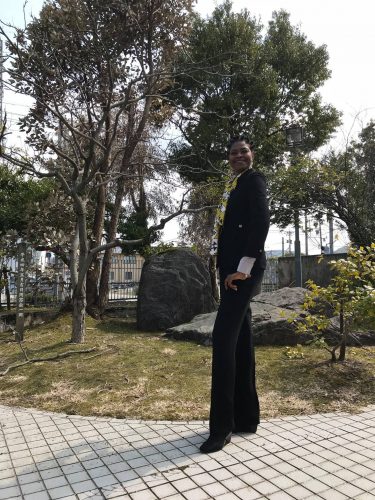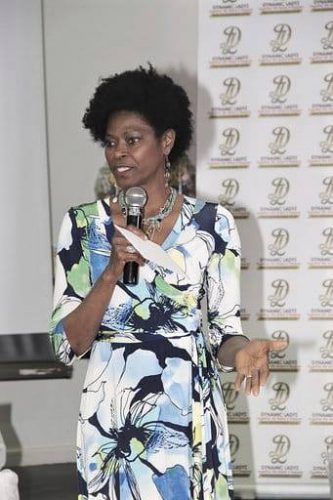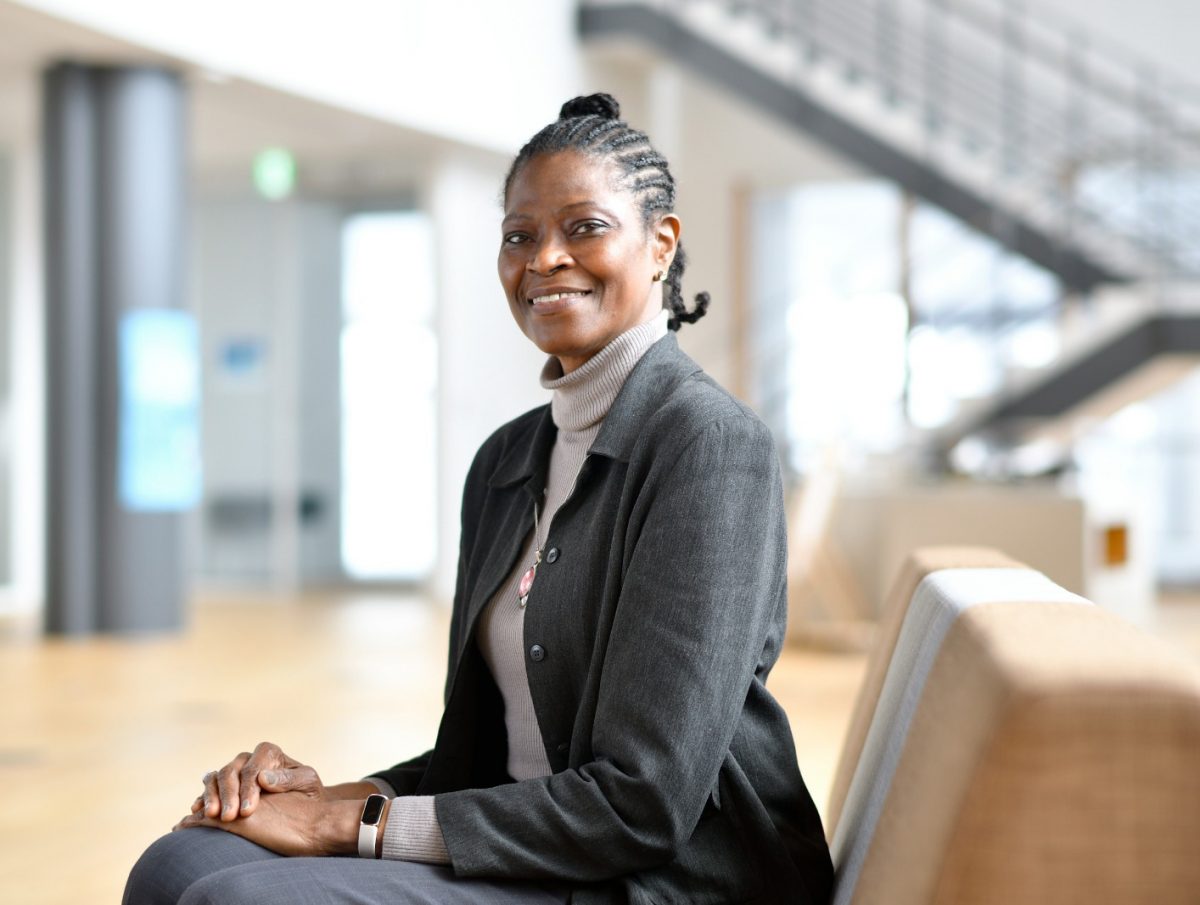Dr Pauline Baird is a professor and author who wants to keep Guyanese creole alive and chief among her attributes is her storytelling skill, which she learned from her deceased mother, who was a consummate storyteller.
In fact, Megan Griffith-Baird did not just tell the stories she portrayed them in the way she dressed, which was always African styled, and when she walked through the streets of Buxton, East Coast Demerara, everyone knew her mission was keeping African culture alive. Her daughter described her as being quite an activist.
“My whole literacy began with storytelling… She used to tell us stories…and she would act them out and stamp and everything. We were seven kids and weren’t allowed to go to people’s houses. She would say you go alone, you come alone. She would tell us all these stories… Another thing she used to do is give our brains creativity so our walls were always painted with murals… She would paint the walls with scenery and at Christmas time we can’t wait to see the new scenery…” Baird said in a virtual interview with this newspaper from Japan.

She recalled learning that stories came from books only when her mother read from a book one night. She then began to anxiously await her seventh birthday as it would mean she could join the library; her mother could not tell her enough stories.
“It was on my little back steps in Buxton that I travelled the world in books…” she said.
Today, she is a professor at a state-of-the-art engineering university in Japan where she trains junior engineers, but it is her storytelling that sets her apart and she has published six books so far. The school trains junior engineers under the age of 18 with the aim of them becoming global innovators. Baird is in her second stint in Japan. She had worked at another university teaching English but currently heads the English department and works on bridging STEM and English. A pull for her to the university in a community where she is the only person of African descent, is the fact that it is planted in the middle of a mountain range in an ageing community and they are working on revitalisation, innovation and community-based initiatives.
Baird can move from one story to another using creolese and perceived “standard English” seamlessly. She hosts “Wah dih story seh” at https://www.youtube.com/WahDihStorySeh where she dedicates time to telling stories in Creole. Describing herself as a “cultural bearer”, Baird tells traditional and whispered stories and family histories on the virtual platform.
“I tell our village stories, not because I am partial to Buxton, but I feel like Buxton’s stories are sometimes everybody’s stories…,” she said. She is so into storytelling that for her Ph.D dissertation, Baird gathered the authentic stories and wrote oral histories of Buxton village women. The stories were told in Creole and for her if anyone wanted to know what she spoke about then it behoved them to learn Creolese.
“I bear our cultures. It’s in me. It is everything. I am Guyanese. I am Buxtonian to the bone. I have no apologies to anyone, I do the Queen’s English, I do the Creolese, I do the translanguaging as we call it… However, it come out, it come out and I am proud of that because in a world where languages are dying daily Creolese is alive and well,” she said proudly.
She stressed that Creolese is not “bruk up English” but it is a language that has rules.
“I am a sister. I am a teacher. I am a friend. I am villager Guyanese. I lived in Guyana until I was 31 when I went away for school and I was back home every year for ten years… And then there was a time when I couldn’t go back because I had a lot of commitments… but I would go every two years…” she said.
She said she is “passionate about women and women’s stories” and growing up with her grandmother and other women in her family she sees it as a “methodology for unpacking so many things”. She uses stories as a methodology for teaching, for writing for everything as once she can see a story she can unpack it.
Childhood

Baird, who has now made the far away land of Guam her home, had a traumatic childhood which involved losing her two younger siblings, aged two and three, to a horrific fire and months later her mother, who was never the same after the fire. At the age of ten and just about to enter secondary school, she found herself having to emotionally support her four younger siblings.
Even today, it is a story that Baird finds painful to recount and she briefly mentioned that aspect of her life.
“My mother never saw me become 13, not even 12. Our house burnt down while I was taking common entrance and the last two kids burnt… my mother was never the same so by October 13th that year she died. So we watched her die, I had just started school September, October she was dead…,” she recalled.
“So now you had this life with five of us, and…it was a journey, like I was just always just holding on, just holding on. So I had to be like mother and father for everyone, I felt for them I felt everything…”
After their mother’s death, Baird and her siblings lived with their grandmother. Then their father remarried and they went to live with him. She described it as a “traumatic living situation, it was not good, it was horrible, yes”. It was at that point that they started to attend the Adventist church as well.
Her primary school days were spent at the Friendship Methodist School and the Anglican Primary School. After common entrance she went to Buxton Government School now Bladen Hall Multilateral, following which she taught Agriculture at Strathspey Elementary for one year. She then moved to the Guyana School of Agriculture where she did two years then a short stint at the Buxton Community High School. Next was the Cyril Potter College School of Education, which she said was natural for her, and after graduation she taught at Lusignan Primary School for a short while before attending the University of Guyana.
Two years of English studies at UG saw her deciding to leave Guyana as she thought, ‘I have to leave this country, it is not good for my mental health’ and she transferred to the Caribbean Union College (CUC) now University of the Southern Caribbean in Trinidad as she was a Seventh-day Adventist at the time. She worked in the library, as a reader and even graded papers as she was already a trained teacher, to pay her tuition fee through credit and with the help of her younger sister.
“When you see me done with library and grading, when you see me guh to the business office me get one list you know, so many hours for grading papers,” she recounted. “I used to grade 150 papers a week, I get me hours, I get so much for the library, me hand them the paper them mark off me credit… “This was how I pay for school. Me never pay money. Me never, never see one bill. When you see summer come, me a clean toilet, me wuk at broom factory. When you see me wuk a broom factory till me hand suh stiff me never see thing like duh. All dem fibre come up all me hand, scratch! It scratch suh till me had to hang me hand off de bed suh [she demonstrated the action].”
Their meals included countless mangoes.
A missionary
It was there that the seed of becoming a student missionary was birthed following a conversation with a visiting pastor. While it looked impossible she eventually got a librarian opening in Palau, but when she got there she was given the position of third grade teacher because of her qualifications.
“I had an experience there that was very, very different. I felt like it was God’s way of giving me something for all the trauma and stress I had been through,” she said.
She left after the agreed year but after graduation from CUC was offered another position in the country where she had a great experience for nine years. During that period as well she started a master’s programme at Saint Michael’s College in Vermont and attended classes during the summer. Eventually she got a scholarship because of her missionary work.
At that point she left the Adventist church because of myriad reasons and she got her first job in Japan in 2002 where she worked as a professor for six years.
“Then I left, went to Guam, set up shop there, built a home,” she shared and it was from there she applied for the PhD programme.
She studied women, the rhetoric of women “and not just any women, village women from Guyana, Buxton village women,” she said.
“I wanted to know how women tell stories and to what effect. I was going to look at the mechanism but then it emerged in another direction where I wanted to do stories as a methodology for passing on information, for preserving information, for culture continuity. And that was something I could use the Buxton stories as a way to show the academy how we can bring those stories in we raw Creolese voices…because those voices aren’t heard…”
Her dissertation was titled ‘Towards a Culture of Rhetoric Approach to Caribbean Rhetoric African Guyanese Transforming Oral Histories’ for which she interviewed African Guyanese women. It was in the form of five letters which was very unconventional and it began, ‘Dear Buxtonian Wah Dih Story seh’. She chronicled the “ultimate sacrifice” of Buxton women placing their bodies on the track to stop the train that was transporting the governor at the time. It was their effort to stop the atrocities in the village.
During her PhD studies she continued teaching at the university in Guam, sometimes virtually and while she returned after her studies a short period later she was hired in her present position in Japan.
Book It
An ardent reader, Baird developed an idea, which came alive following the advent of COVID-19, where she allows stories written by mostly Guyanese authors to be shared and those who join in on Zoom are given an opportunity to share how they resonate with them. The authors are given the opportunity to share about themselves and their motivation behind the book and their journey while writing. Authors are recommended mostly and they also appear on the platform where they read excerpts from their books before discussions begin. However, the entire story is not told. She encourages people to buy the book as she wants to develop a culture where Guyanese read what they write.
But the idea was really born out of her wanting to share the fountain of information she got from books she read by Japanese authors. “I thought, ‘Oh gosh I wish I could share some of these things I am learning about with my own people’,” she said. One of the things she learnt was about employees cleaning their work space every day, giving themselves a fresh daily start, which helps in respecting their space and work.
She teamed up with another Guyanese, Melva Archer-Percival, and ‘Book It’ became a thing. It took off just about the time of COVID-19. She holds one event a month for ten months in a year, but if she has no book and author for a month then that month is skipped.
Talking about herself as an author, Baird said she focuses on telling stories about Guyana.
“My books, all of them, they are about Guyana, Guyanese and the village because I feel like when I was growing up I didn’t have those stories to read. It may sound very clichéd, but I didn’t read about us,” she said.
She also provides the service of assisting people to write their books if they need it.
The upcoming Book It event will focus on two authors, with whom Baird has been working; one is an Australian and the other a Guyanese living in St Lucia. But interestingly as well, she is going to be a subject for the first time as “Dave and the Lime Tree”, a book written by her will be featured. The next ‘Book It’ event is this Saturday (November 26) from 5:30 pm. Interested persons can join by using the Zoom link /mcmaster.zoom.us/j/96806704786?pwd=SUJzY2lUZU9pZWhCUXV4SUI3TUdpUT09
The passcode is 358874.
Baird is married to an American and their home is in Guam.





